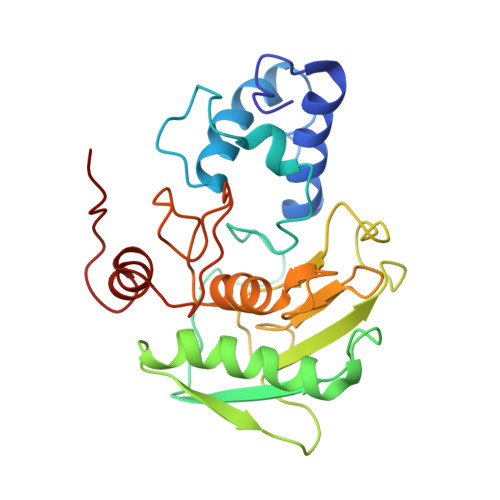Charge-Triggered Membrane Insertion of Matrix Metalloproteinase-7, Supporter of Innate Immunity and Tumors.
Prior, S.H., Fulcher, Y.G., Koppisetti, R.K., Jurkevich, A., Van Doren, S.R.(2015) Structure 23: 2099-2110
- PubMed: 26439767
- DOI: https://doi.org/10.1016/j.str.2015.08.013
- Primary Citation of Related Structures:
2MZE, 2MZH, 2MZI - PubMed Abstract:
Matrix metalloproteinase-7 (MMP-7) sheds signaling proteins from cell surfaces to activate bacterial killing, wound healing, and tumorigenesis. The mechanism targeting soluble MMP-7 to membranes has been investigated. Nuclear magnetic resonance structures of the zymogen, free and bound to membrane mimics without and with anionic lipid, reveal peripheral binding to bilayers through paramagnetic relaxation enhancements. Addition of cholesterol sulfate partially embeds the protease in the bilayer, restricts its diffusion, and tips the active site away from the bilayer. Its insertion of hydrophobic residues organizes the lipids, pushing the head groups and sterol sulfate outward toward the enzyme's positive charge on the periphery of the enlarged interface. Fluorescence probing demonstrates a similar mode of binding to plasma membranes and internalized vesicles of colon cancer cells. Binding of bilayered micelles induces allosteric activation and conformational change in the auto-inhibitory peptide and the adjacent scissile site, illustrating a potential intermediate in the activation of the zymogen.
- Biochemistry Department, University of Missouri, 117 Schweitzer Hall, Columbia, MO 65211, USA.
Organizational Affiliation:




















